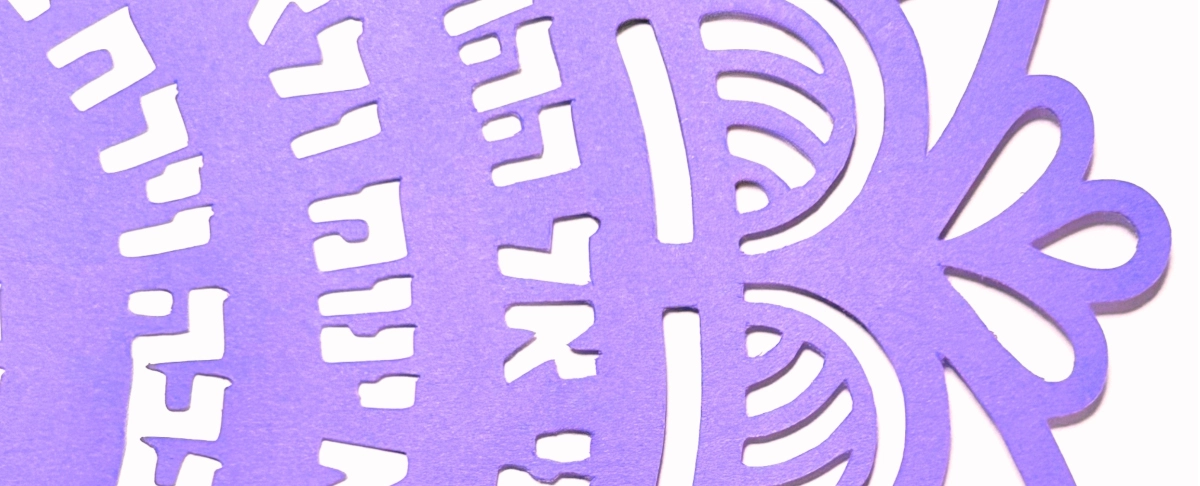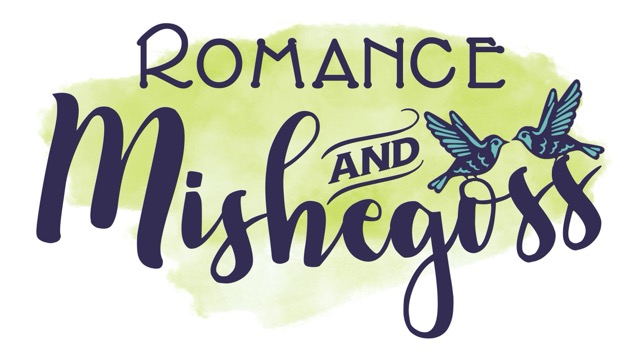Your cart is currently empty!

Jewish Birth Amulets: Kimpetbrivls & Kame’ot, Papercut Protection
In the past, Jewish women gave birth with the help of midwives and female relatives, without pain relief or modern medicine, though a protective amulet often hung nearby, on a wall or near a window or doorway. In Yiddish, these birthing amulets were called kimpetbrivls, meaning, “childbed letter.” Sephardim simply called them kame’a, which is the Hebrew word for amulet.
Hung over the mother’s bed or the baby’s cradle, people believed a kimpetbrivl would protect the new mother through the arduous birth, and her infant as well, during the dangerous first days of life.

A set of four papercut birth amulets, Ukraine, circa 1880.
While many of these amulets were simple handwritten slips, others were beautifully crafted papercuts that included folkloric drawings of protective angels, and occasionally an image of the “demon” Lilith crossed out to show her banishment. Part sacred text, part folk magic, part art, these amulets are a window into a time when childbirth had the potential for as much a spiritual crisis as a medical one.
What Makes Up a Kimpetbrivl
Kimpetbrivls, like most amulets, follow a formula. Though I have not sat down with a copy of the Sefer Raziel to learn the proper method and time of day for writing magical healing amulets,* I have, however, studied Traditional Jewish Papercuts by Joseph Shadur like a textbook.
* I am not a learned rabbi or scholar. If you choose to purchase one of my amulets, please take them at face value.

What I have concluded is that kimpetbrivls invariably entail interjections about not suffering witches (while unironically being a magical healing/protecting amulet!), the names of angels (for said purpose), perhaps a stick figure of Lilith or an apex predator (lest the birthing mother forgets she’s in danger), and most importantly, prayers and/or psalms (imploring G-d for comfort and strength).
Judaism contains multitudes, no?
In case you were wondering what the official rabbinic stance on amulets is, you’ll be nonplussed to learn the rabbis disagreed over them. On the one hand was Maimonides, the king of logic, who was highly skeptical of superstitious activities. On the other hand, were the kabbalists whose campaign slogan might have been: Three successful cures — mine, theirs, and yours! Joking aside, three successful amulets meant they were made by an “expert” and could therefore continue to be sold … by them. For real, it’s in the Talmud.
Senoy, Sansenoy, and Semangelof vs. Lilith
Hint: they were no match for Lilith.
Most kimpetbrivls appeal to angels. There are a few calling on the archangels Michael, Gabriel, Uriel, and Raphael to preserve them. But the Three Stooges of Angeltown: Senoy, Sansenoy, and Semangelof are the foremost names to appear on birthing amulets.

According to the Alphabet of Ben Sira, a medieval text, G-d sent these three chucklehead angels to convince Lilith—whose myth had evolved over the millennia from a dissatisfied and fed-up wife to a child-killing demon/witch… hmmm—to return to Eden with them and her place at Adam’s side, a little behind and to the left of him. Having thoroughly failed to negotiate with a woman scorned, and shocking no one except the patriarchy, Lilith turned them down.
Allegedly, Lilith told them that not only would she not return with them, but because her reputation had been dragged through the primordial mud of Eden, she would murder birthing women and their babies in retribution.
(Friends, there were all kinds of fidelity issues between Adam and Lilith in their 130 years apart, and I’m still working out the math. I think their other partners were all angels, which makes this all very complicated and messy, and let’s just not think any further about where all the babies are coming from at this point. Or human-angel gestation cycles. Or any of it, really. Let’s move on, shall we?)

Lilith, is that you? Girl, get outta that tree!
In any event, Lilith allegedly made one promise to the angels: If she saw an amulet with their names on it, she would allow the three of them, Senoy, Sansenoy, and Semangelof to protect mother and child.

And that brings us to Adam, happily patriarching over his genetic twin wife, Eve. (Oy. Moving on…) As the ultimate matriarch and patriarch in the Torah, they are meant to care about their descendants. That’s why birthing amulets sometimes stated, “Adam and Eve—Excluding Lilith!” Other amulets quoted Exodus 22:17: “Thou shalt not suffer a witch to live,” which, in context, was aimed clearly meant for Lilith.
“A birth amulet featuring an illustration of Adam and Eve. The names of the three angels as well as those of Lilith and Satan, also appear. This is the earliest Jewish amulet to appear in paper print. Amsterdam, circa 1700.” —The Librarians, NLI

Women, Folk Religion, and the Art of Protection
Although many amulets were written by male scribes, women were often involved in their making, exchange, and use. For centuries, folk religion operated alongside formal halakha (Jewish law), giving Jewish women agency to care for one another with rituals and objects that were as much about emotional comfort as mystical protection.
I love the playfulness of the amulet below. The flowers and animals are cheerful and bright, not to mention the swirls and pattern of the background are delightful. But there is still a dark undercurrent at work here. Read on…

[I’ll be the first to admit that my Hebrew/Aramaic/Yiddish aren’t great, so if you read something else here, please share in the comments!] Sometimes all three languages appear on one amulet. And of course, those languages all use the same alphabet.
The bottom three sections read as follows (from R to L):
War teachers—
Senoy—
Adam;
Abraham;
Isaac;
Jacob
A man with his sword above him—
Sansenoy—
A witch will not live; Live a witch will not; A witch will not live
Scared at night—
Semangelof—
And Eve;
And Sara;
And Rebecca;
And Leah
The middle one doesn’t sound very “Jewish,” does it? I was surprised to learn of this mantra-like formula. This phrase about witches appears on many—but not all—kimpetbrivls.
Reclaiming the Amulet
The tradition of hanging a kimpetbrivl over the childbed nearly disappeared in the 20th century, especially after the Holocaust severed countless threads of folk practice. But in recent years, some Jews have begun reclaiming and reinterpreting this practice. A study done in a pediatric intensive care unit in Israel suggests that 30% of people see no contradiction in pairing folk medicine with modern medicine. A kimpetbrivl in today’s high-tech world can serve as a way to honor the ones who came before us while we search for peace within ourselves, or as a prayer for protection over the things we know logically we cannot fully control.

Being a Jewish woman in 2025, I’m not comfortable vilifying another woman when the accusers are a series of men eager to, for lack of a better word, demonize a woman unwilling to the demand that she be subservient. Lilith’s whole story feels at odds with rachmones (the Yiddish word for the Jewish value of compassion, mercy, and empathy).
I have no wish to banish witches or Lilith (though I could do without demons, so long as they weren’t framed), but I still want to link the past and the present by offering what comfort can come from using an amulet. That desire for connection is still very real.
I originally set out to recreate a traditional kimpetbrivl, but the more I learned about Lilith’s story, the less I wanted to victimize her. I asked myself: What should I keep? What can go? What should I add?

I chose to include Psalm 121 (Shir LaMa’alot) with a Star of David at the center. (See the above purple amulet.) The psalm helps focus the mind, while the star has long symbolized balance, protection, and identity. Though its origins predate Judaism, it became a recognizable Jewish symbol only in more recent centuries.
For many of us today, the comfort of a birth amulet isn’t rooted in fear of Lilith or any other demon or witch. It’s about feeling connected to the generations of Jewish mothers who came before us—women who faced the pain and danger of childbirth with faith and courage. The impulse behind these amulets still resonates. In times of crisis, we turn to the familiar for comfort. A kimpetbrivl was never just paper and prayer—it was hope, cut from faith and love.

What Do You Think?
What would you want included or excluded on a modern amulet?
💬 Share your thoughts in the comments!
Want More Jewish Art & Folk History?
📩 Subscribe to my newsletter for deep dives into Jewish papercuts, mystical traditions, and reclaimed folk art practices.
This post contains affiliate links. If you buy something through one of these links, I may earn an affiliate commission.

Leave a Reply